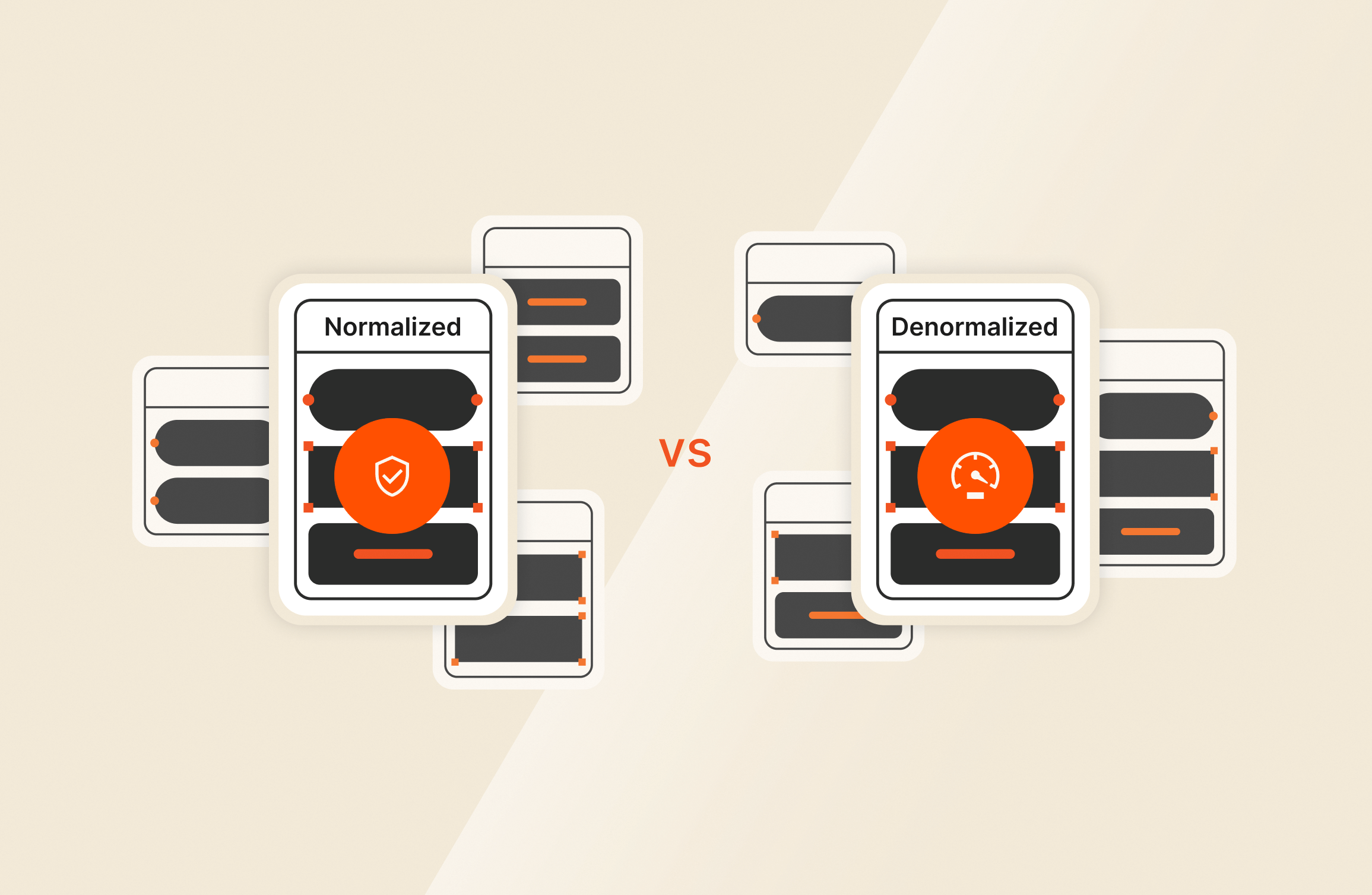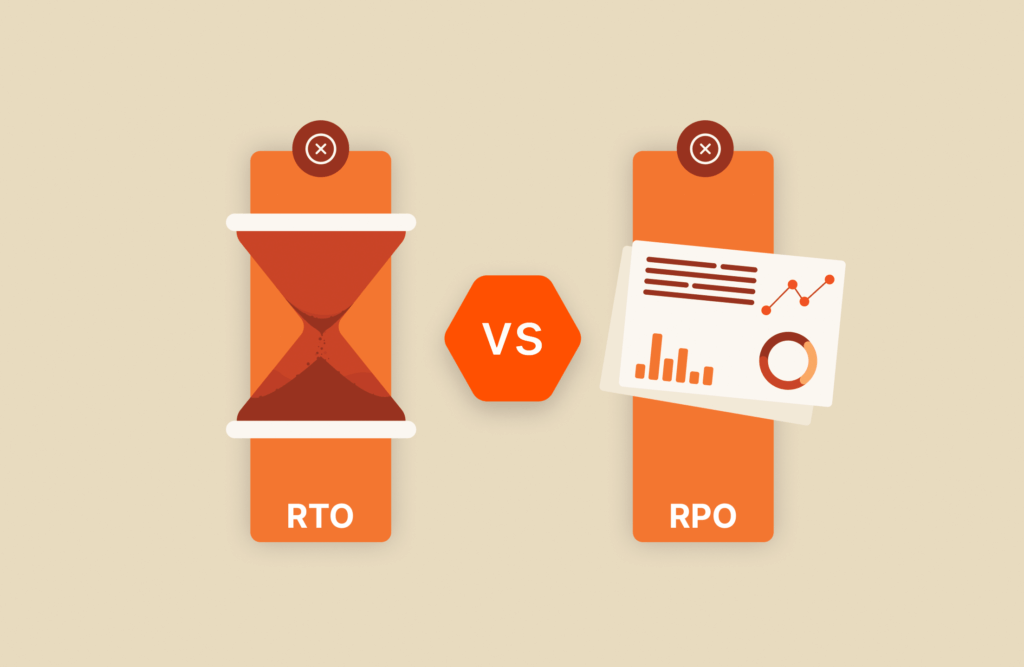Normalization and denormalization are two key concepts in database design, each serving a specific purpose. The goal of normalization is to minimize data redundancy and dependency by organizing data into well-structured tables. Denormalization involves combining tables that have been normalized to improve query performance and simplify data retrieval.
The choice between the two depends on the specific requirements of the application and the balance between data consistency and system performance, but both play a very important role in data management.
In this blog post, we’ll compare and contrast normalized and denormalized data, looking at their key differences and use cases, and explaining how to choose the best approach.
What Is Normalized Data?
Normalized data refers to a database design technique that organizes data in a way that reduces redundancy and improves data integrity. The primary goal of normalization is to eliminate data anomalies and inconsistencies by organizing data into well-structured tables that adhere to certain rules.
The normalization process involves breaking down large tables into smaller, related tables and establishing relationships between them. This is achieved through a series of normal forms, each building on the previous one. The most common normal forms include:
- First normal form (1NF), which eliminates duplicate columns within a table and ensures that each column contains atomic (indivisible) values.
- Second normal form (2NF), which meets the requirements of 1NF and removes partial dependencies by ensuring that all non-key attributes are fully functionally dependent on the primary key.
- Third normal form (3NF), which meets the requirements of 2NF and eliminates transitive dependencies by ensuring that non-key attributes are not dependent on other non-key attributes.
These normal forms address different types of data redundancies and dependencies, making the database more organized and efficient.

Try FlashArray//C™
Capacity-optimized, All-flash Storage
Get enterprise-class performance, reliability, and agility at an accessible price.
Benefits of Normalized Data
The benefits of normalized data include:
- Reduced redundancy: Normalization minimizes data duplication by storing information only once. This reduces storage requirements and improves efficiency.
- Improved data integrity: By eliminating anomalies such as insertion, update, and deletion anomalies, normalized data ensures that the database remains accurate and consistent.
- Enhanced consistency: Normalization enforces consistency in data representation across tables, leading to a more coherent and standardized database structure.
- Easier updates: Updates to the database are simplified because changes only need to be made in one place. This reduces the likelihood of inconsistencies arising from incomplete or conflicting updates.
- Simplified querying: Queries become more straightforward and efficient as data is organized logically into related tables, allowing for easier retrieval of specific information.
In summary, normalized data is a key concept in database design aimed at minimizing redundancy and improving data integrity through a systematic process of organizing data into normalized forms. This results in a more efficient, consistent, and maintainable database structure.
What Is Denormalized Data?
Denormalized data refers to a database design approach where data from multiple tables is combined into a single table. The purpose of denormalization is to optimize data retrieval and improve performance, especially in scenarios where read operations significantly outnumber write operations. Unlike normalization, denormalization sacrifices some redundancy and data integrity in favor of faster query execution.
In denormalized data, related information that would typically be distributed across separate tables in a normalized database is consolidated into a single, flat table. This consolidation reduces the need for complex joins during query execution, as all the required data is available in one place. This approach is often used in data warehousing and business intelligence applications where the emphasis is on analytical processing rather than transactional processing.
Benefits of Denormalized Data
The benefits of denormalized data include:
- Optimized data retrieval: Denormalization aims to improve query performance by minimizing the number of joins needed to retrieve data. This is particularly beneficial in situations where complex queries are executed frequently.
- Simplified data analysis: Analytical tasks and reporting can be simplified with denormalized data because all relevant information is stored in one place. This makes it easier to generate reports and perform data analysis without the complexity of navigating through multiple tables.
Use Cases for Normalized Data
Use cases for normalized data include:
Transactional Systems (OLTP)
Normalized data ensures data integrity during frequent transactional operations. It helps maintain accuracy and consistency in the financial records.
Example: An online banking system that handles frequent transactions, including deposits, withdrawals, and transfers
Complex Data Relationships
Normalization works well for dealing with complex relationships such as many-to-many relationships, for example, between students and courses in a school database. It allows for efficient storage and retrieval of data without redundancy.
Example: A university database that manages student information, course enrollment, and faculty details
Inventory Management Systems
Normalized data supports flexibility by allowing changes to be made in one place. It helps avoid update anomalies and ensures that changes to product details, suppliers, or sales are consistent.
Customer Relationship Management (CRM) Systems
In a CRM system, where customer data is often linked to various interactions and transactions, normalization helps maintain data integrity. It allows for easy updates and modifications without introducing inconsistencies.
Human Resources (HR) Databases
Normalized data supports scalability by allowing the addition of new tables for different HR aspects. It ensures that changes to employee records are properly managed without affecting other parts of the system.
Use Cases for Denormalized Data
Use cases for denormalized data include:
Reporting and Analytics Systems (OLAP)
Denormalized data is well-suited for analytical systems with heavy read operations, such as a data warehouse used for business intelligence reporting, where complex queries analyze large volumes of data from multiple sources.
Content Management Systems
Denormalized structures simplify content retrieval and analysis, enabling faster delivery of content and more efficient reporting on user interactions.
Real-time Analytics for Internet of Things (IoT)
Denormalized data allows for quick querying and analysis of streaming data, facilitating timely decision-making in dynamic environments, which is ideal for an IoT system that collects and analyzes real-time data from sensors and devices.
Dashboards and Data Visualization
Denormalized data supports the rapid retrieval of summarized information, enhancing the responsiveness of dashboards and visual analytics.
Enhanced User Experience
In systems where user interactions involve complex queries or visualizations, denormalized data contributes to a more responsive and seamless user experience.
In these cases, denormalized data is particularly advantageous for read-heavy workloads and scenarios where quick access to summarized or aggregated information is critical. The trade-off for reduced redundancy and improved query performance is accepted in favor of supporting efficient reporting and analytical processes.
Choosing the Right Approach
The decision involves finding the right balance based on system requirements. Normalized databases are often easier to maintain, especially in OLTP systems with frequent updates. Denormalized databases may require more careful management to avoid inconsistencies and are better for OLAP systems where complex queries and analytical tasks are common.
Choosing the right data model—whether normalized, denormalized, or a hybrid approach—depends on various factors. Thoughtful consideration of these factors is crucial. Here are some guidelines to keep in mind:
- Nature of the system: For transactional systems with frequent insert, update, and delete operations (OLTP), normalization is often preferable to maintain data integrity. For analytical systems with heavy read operations (OLAP), denormalization may be suitable to enhance query performance.
- Data complexity: Consider the complexity of relationships between entities. If your data involves intricate relationships, normalization might be a better fit to manage and maintain these relationships.
- System performance: Evaluate the performance requirements of your system. If quick data retrieval is a priority and there are read-heavy workloads, denormalization may improve query performance.
- Scalability: Consider the volume of data and the need for scalability. Both normalized and denormalized approaches can scale, but the impact on performance may differ.
- Maintenance: Normalized databases are generally easier to maintain during frequent updates and changes to the data structure. Denormalized databases may require careful management to avoid inconsistencies, especially when making updates that involve duplicated data.
- Data warehousing: For analytical and reporting purposes, consider implementing a data warehousing strategy. Data warehouses often use denormalized structures to support efficient querying and reporting without impacting the operational database.
- Query requirements: Understand the types of queries your system will frequently encounter. If your queries involve complex joins and aggregations, denormalization might be beneficial for performance.
- Flexibility and adaptability: Assess the need for flexibility in your system. If frequent changes to the data structure are expected, normalization provides more adaptability. Denormalization may be suitable for scenarios where the data structure is relatively stable, and the focus is on optimizing read operations.
- Data consistency requirements: Evaluate the criticality of data consistency in your application. If maintaining the highest level of data integrity is a priority, normalization is essential.
- Use case-specific considerations: Tailor your approach based on the specific requirements of your use case. For example, consider the nature of your application (e.g., e-commerce, healthcare, finance) and its unique data characteristics.
Ultimately, the choice between normalized, denormalized, or hybrid data models should be driven by a comprehensive understanding of your system’s requirements. Striking a balance between data integrity and query performance is often key, and hybrid approaches can offer a flexible solution. Regularly reassess the system’s needs and be prepared to adapt the data model as the application evolves.
Conclusion
Normalized data is organized into multiple related tables, each with a specific purpose, for the sake of minimizing data redundancy and dependency. Denormalized data consolidates data into a single flat table or fewer tables to optimize data retrieval. The choice between normalized and denormalized data depends on the specific use case and the nature of the workload (OLTP vs. OLAP). Normalization prioritizes data integrity, while denormalization prioritizes query performance.
Ultimately, to make the most of normalized or denormalized data, you’ll need an efficient data storage solution. Purity//FA, the software heart of Pure Storage® FlashArray™, maximizes your storage investments—on premises or in the cloud—allowing you to meet today’s storage demands with up to 10:1 deduplication, always-on data protection, and lightning-fast replication. Learn more about Purity.

Written By:






